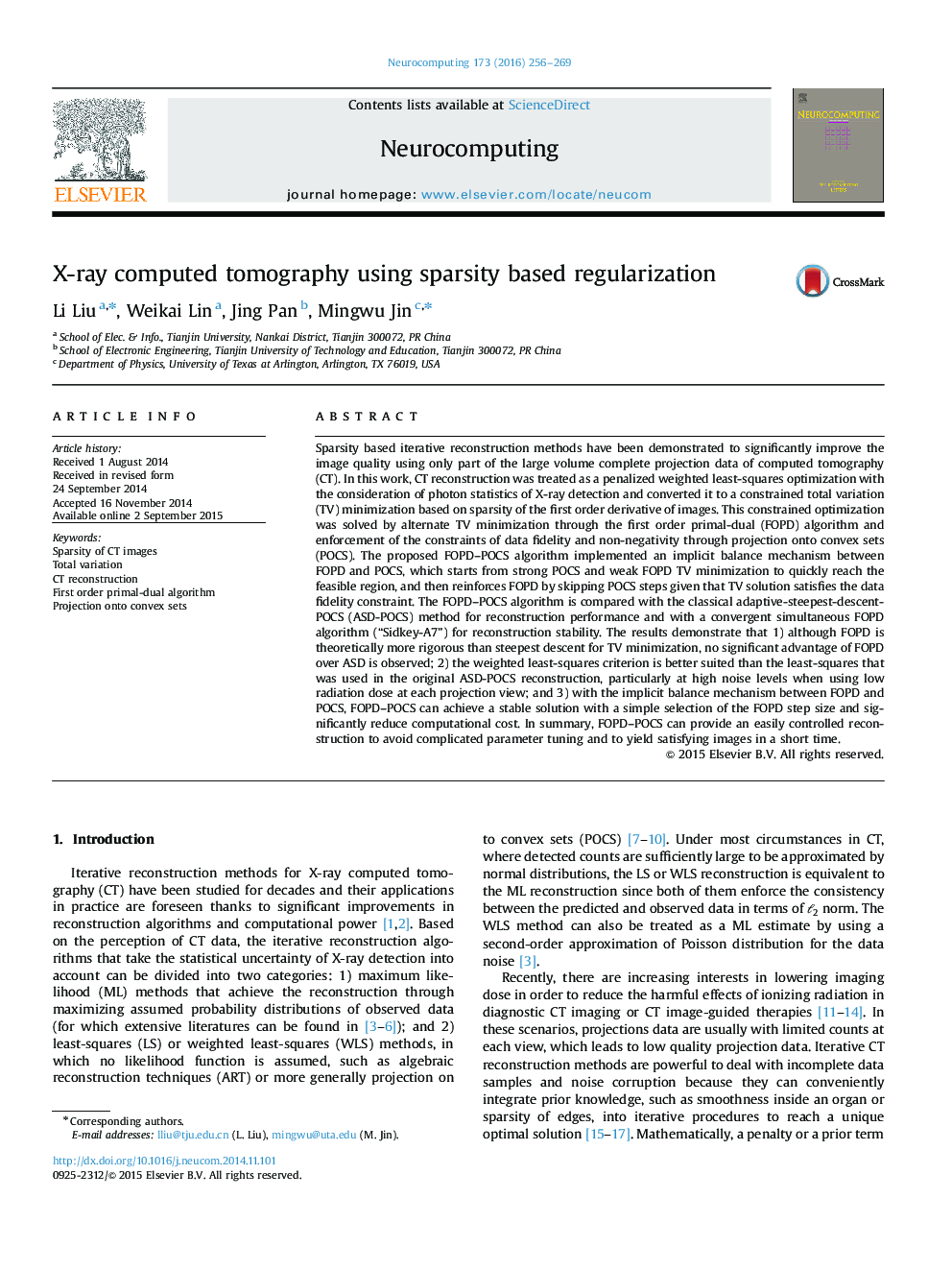| کد مقاله | کد نشریه | سال انتشار | مقاله انگلیسی | نسخه تمام متن |
|---|---|---|---|---|
| 407282 | 678135 | 2016 | 14 صفحه PDF | دانلود رایگان |
Sparsity based iterative reconstruction methods have been demonstrated to significantly improve the image quality using only part of the large volume complete projection data of computed tomography (CT). In this work, CT reconstruction was treated as a penalized weighted least-squares optimization with the consideration of photon statistics of X-ray detection and converted it to a constrained total variation (TV) minimization based on sparsity of the first order derivative of images. This constrained optimization was solved by alternate TV minimization through the first order primal-dual (FOPD) algorithm and enforcement of the constraints of data fidelity and non-negativity through projection onto convex sets (POCS). The proposed FOPD–POCS algorithm implemented an implicit balance mechanism between FOPD and POCS, which starts from strong POCS and weak FOPD TV minimization to quickly reach the feasible region, and then reinforces FOPD by skipping POCS steps given that TV solution satisfies the data fidelity constraint. The FOPD–POCS algorithm is compared with the classical adaptive-steepest-descent-POCS (ASD-POCS) method for reconstruction performance and with a convergent simultaneous FOPD algorithm (“Sidkey-A7”) for reconstruction stability. The results demonstrate that 1) although FOPD is theoretically more rigorous than steepest descent for TV minimization, no significant advantage of FOPD over ASD is observed; 2) the weighted least-squares criterion is better suited than the least-squares that was used in the original ASD-POCS reconstruction, particularly at high noise levels when using low radiation dose at each projection view; and 3) with the implicit balance mechanism between FOPD and POCS, FOPD–POCS can achieve a stable solution with a simple selection of the FOPD step size and significantly reduce computational cost. In summary, FOPD–POCS can provide an easily controlled reconstruction to avoid complicated parameter tuning and to yield satisfying images in a short time.
Journal: Neurocomputing - Volume 173, Part 2, 15 January 2016, Pages 256–269
